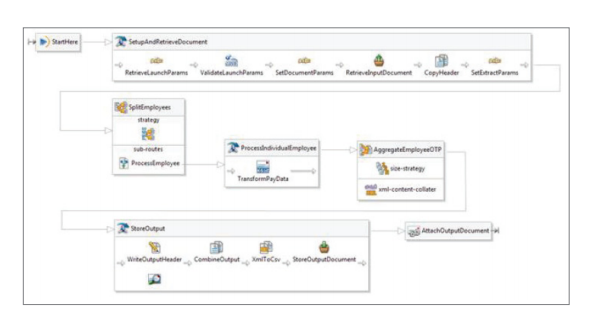XML+Xpath+XSL
I am sorry for taking a long break in writing up. I was held with work, so didn’t get the time... as well excuse me for not replying to the ‘flood of emails’ received from you guys asking suggestions and assistance. I will reply soon once I sort out my inbox.
In WORKDAY integration plays an important role for the successful run of the projects.
WORKDAY always interacts in XML format.
Most of the cloud applications talk in XML and WORKDAY generates automatically XML file.
We use XML with the assistance of web services; they are the building blocks for construction of applications.
Extensive Mark up Language-XML
XML is a data language based on text markup (special markers (tags) in the text that identify its parts).
Markup Language: Set of rules for marking up a text. A markup language defines what tags you may use how and where to use them.
HTML is a markup language-The key difference between HTML & XML is…
HTML is designed for display and uses ‘CSS’ for manipulating display.
HTML data is fixed and mostly about presentation.
-----------------------------------------------------------------------------------------------------------------
XML: It is designed for data and uses ‘XSLT’ for manipulating data & display for multiple output types.
· Basic XML provides a ‘grammar’ for markup.
· Elements must conform to certain rules making XML a meta-markup language.
· Human and computer friendly format.
· Excellent for long term data storage and data reusability.
· Handles the data in a tree structure having one and only one root element.
XML gives an excellent service for handling data with a complex structure.
· Data managed using RDB tables has a regular data structure.
· In today’s fast changing world, most of the data that exists is not structured and at times cannot be managed using tables like… Complex Structure and Atypical data.
There are many applications & tools in the market competing to streamline the data and one such format that can handle data without an extensive manipulation is ‘XML’.
XML allows for the description of data in a text format as it uses the text data, whereas, data delivered back & forth without OS obligation.
XML data can be stored for long periods without the fear of thinking unusable, whereas, data created through specific application becomes useless or even impossible to access if the application is unusable.
Using XSLT, an XML document can be transformed into a document of a different structure or format (HTML,CSV,etc) ONE SOURCE-MULTI USE solution.
XSLT style sheet is designed to use single XML document for various purposes (the web or mobile phones)


No comments:
Post a Comment
Note: Only a member of this blog may post a comment.